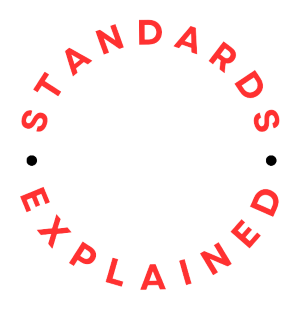ISO 23354:2020 Business requirements for end-to-end visibility of logistics flow provides guidelines for business requirements to achieve end-to-end visibility of logistics flows. It specifies three business requirements for the visibility of logistics traffic flow based on use cases and gap analysis:
- LISS network architecture requirements;
- visibility data interchange requirements between LISSs;
- visibility data interface and process requirements for an LISS network.
The standard also includes guidelines for business participants and stakeholders in an LISS network such as logistics information service providers, single window/SSP operators, data providers, and logistics data users.
What does it cover?
| Introduction |
| 1 Scope |
| 2 Normative references |
| 3 Terms and definitions |
| 4 Abbreviated terms |
| 5 Business requirements overview |
| 6 Logistics information service system network architecture requirements |
| 6.1 Network architecture requirements overview |
| 6.2 LISS network entities |
| 6.3 Network architecture requirement between different LISSs |
| 6.4 Network architecture requirement between LISS and SW/SSP |
| 6.5 Network architecture requirement between LISS and data providers |
| 6.6 Network architecture requirement between LISS and data users from other LISSs |
| 7 Visibility data interchange requirements between LISSs |
| 7.1 Event data classification |
| 7.2 Data control for different entities in the LISS network |
| 8 Visibility data interface and process requirements for LISS network |
| 8.1 Unified user management and authentication process requirements |
| 8.2 Open data access |
| 9 Guideline for business participants and stakeholders |
| 9.1 LISS operator |
| 9.2 Single window operator |
| 9.3 Data providers |
| 9.4 Data users |
| Annex A Use cases and gap analysis |
| A.1 Non-harmonised trading partner data |
| A.2 Basic logistics data with non-harmonized technical and data format standards |
| A.3 Same logistics data query with different return information from different LISSs |
| A.4 Public or private data connection |
| A.5 Summary of use cases and gap analysis |
| Annex B Related standards and organizations |
| B.1 Key challenges for the standardization |
| B.2 Related international standards and codes |
Implementation
Implementing ISO 23354 involves several key steps to ensure effective management and oversight of logistics operations.
Define Business Objectives
Clearly define the business objectives for achieving end-to-end visibility of logistics flows. These objectives should align with the organization’s overall strategic goals and priorities.
Identify Stakeholders
- Identify the stakeholders involved in the logistics process, including suppliers, carriers, customers, and internal departments.
- Understand their roles and requirements for visibility to ensure their needs are addressed.
Map the Logistics Flow
- Map out the entire logistics flow from the point of origin to the final destination, including all intermediate steps and handoffs.
- Identify key touchpoints and data sources along the flow.
Identify Data Requirements
Determine the data elements needed to provide end-to-end visibility of logistics flows. This may include information on inventory levels, shipments, transportation status, and location tracking data.
Assess Technology Infrastructure
Assess the organization’s existing technology infrastructure, including IT systems, data management tools, and communication networks. Identify any gaps or limitations that need to be addressed to support end-to-end visibility.
Select Technology Solutions
Select appropriate technology solutions to support end-to-end visibility of logistics flows. This may include transportation management systems (TMS), warehouse management systems (WMS), RFID tracking, GPS tracking, and data analytics tools.
Integrate Systems and Data Sources
Integrate different IT systems and data sources to enable seamless data exchange and visibility across the logistics network. This may involve implementing APIs, data integration platforms, or EDI (Electronic Data Interchange) solutions.
Define Performance Metrics
Define key performance indicators (KPIs) to measure the effectiveness of end-to-end visibility efforts. These metrics may include on-time delivery performance, inventory accuracy, order fulfillment rates, and cycle times.
Implement Monitoring and Reporting
Implement monitoring and reporting mechanisms to track the performance of logistics flows in real-time. This may involve dashboards, alerts, and exception management processes to identify and address issues proactively.
Train and Educate Personnel
Provide training and education to personnel involved in the logistics process to ensure they understand how to use the visibility tools and leverage the available data effectively.
Continual Improvement
- Foster a culture of continual improvement by regularly reviewing and optimizing logistics processes and visibility capabilities.
- Obtain feedback from stakeholders and use data-driven insights to drive ongoing enhancements.
In conclusion…
By following these steps, organizations can effectively apply business requirements for end-to-end visibility of logistics flows in conformity with ISO 23354, leading to improved operational efficiency, customer satisfaction, and supply chain performance.
ISO 23354 can be purchased through the ISO.org website.














Comments (0)